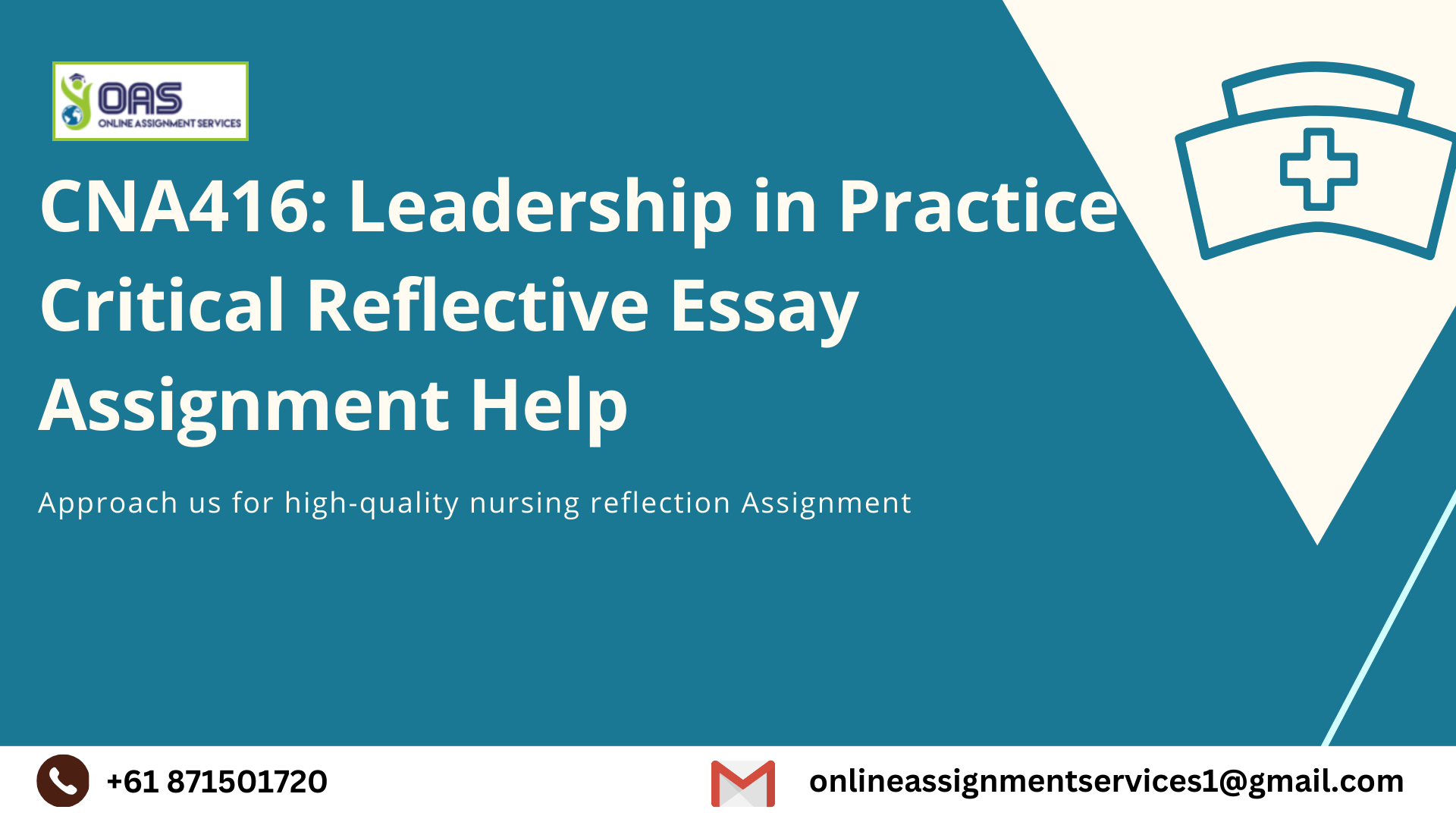CNA416: Leadership in Practice Critical Reflective Essay Assignment Help

Question
CNA416: In this nursing assignment for the University of Tasmania, the students are required to write a critical reflective essay for this assessment activity discussing their role in planning and implementing a Practice Development effort. The student will need to identify how their leadership skills have aided this process, as well as the challenges they faced in that particular situation.
Solution
The solution is divided into three sections: an Introduction, a Discussion, and a brief Conclusion.
Introduction
The first section of the assignment provides an introduction to the purpose of writing this reflective essay. Our experts have consolidated the introduction in a concise yet informative manner.
Healthcare is among the most challenging sectors across the globe. The challenges range from growing needs of the people, the increasing burden on the healthcare workers, lack of professional and skilled staff, increasing inequalities and many more(Elmqvist, 2016). In such challenges, the intervention with effective leadership plays an important role.
If you are also looking for expert assistance in writing your nursing leadership and management reflection, WhatsApp us at +447956859420.
Discussion
The next section in this nursing leadership and management reflection solution corresponds to the experience of the student concerning the Practice development initiative and the student was able to depict their leadership as well as management skills in this effort. Our experts have also supported the reflection with relevant concepts and theories related to leadership in nursing practice.
I have been working as a clinical Nurse in a respiratory ward, where one of the key issues that have been found using the recent Best Practice Australia (BPA) survey within our hospital has been the prevalence of the culture of “Blame” among the staff members. On learning from our history, we have witnessed a strong prevalence of the “blame” culture within our society. For centuries, the people within society have engaged in finding errors among the precincts. In the healthcare sector, the culture of blame is high due to the concept of patient safety, which is the fundamental principle within the healthcare environment (Parker and Davies, 2020). As a nurse it is important for me to prevent any form of errors or avoid any kind of adverse effects on the patients in order to maximise patient safety. This principle of patient safety is embedded as the professional core value among healthcare workers on a daily basis. On the contrary, I believe the healthcare sector is the most uncertain sector with the highest amount of risk as every process associated within healthcare has a certain degree of inherent safety which can be due to the products used, the varying results or most importantly, issues in the system. In the healthcare sector, there has been the term “Healthcare Adverse Event (HAE)”, which includes the various types of errors, incidents, accidents, mistakes, deviation or any other set of actions that can lead to the causation of harm to the patients. On applying the Heinrich’s Law on industrial accidents, where healthcare can be considered as an industry, it has been identified that for every accident leading to any 3form of major injury, there are 29 other sets of accidents that cause minor injuries and 300 other accidents that lead to no injuries (Mauro et al., 2018). Thus, considering this scenario, any HAE that is leading to a death or adverse outcome for a patient, there must be 29 other minor injuries and 300 other injuries with no harm(Radhakrishna, 2015). This establishes an idea that one sole person is most of the time not responsible for any HAE within the healthcare sector and hence the blame culture can serve to be ineffective over the long run. In addition to this, prior to the promotion of blame culture within the healthcare organisation, the effectiveness of the system is to be tracked first. Across the globe it has been identified that healthcare lacks the valid set of patient safety measures in alignment with the regulations and interpretations associated with HAE. The blame culture within healthcare cannot be identified to be effective based on the statistics. As per the Okpala, (2020), in the year 1999, the number of annual deaths based on the medical errors within the USA has been around 98000, but currently there has been a disturbing increase in the number of deaths due to HAE. As per the reports, the numbers have increased four times by the year 2016, which is around 400,000 deaths across a single year, thus making HAEs the third most common cause leading to deaths in the healthcare sector. This signifies the ineffectiveness of the blame culture within the healthcare sector as every procedure has a certain degree of unsafety, which can lead to healthcare adverse events (HAE). Rather than engaging in a blame culture, it becomes important to report HAE, which failed in a blame culture and hence the rise in the HAE numbers. In the scenario of blame culture, I have learnt that the leaders should engage in focusing on visualising the issues or the mistakes on a broader level. As per the guidelines of the World Health Organization (WHO), special attention in terms of HAE reporting is important as there are similar HAEs, that have been identified under different people based on similar circumstances (Okpala, 2020).
Wish to write a student nurse reflection on leadership and management for yourself? Call us at +61871501720 to read more.

Conclusion
Lastly, a brief conclusion is provided to highlight all the significant findings that were identified through this reflective process.
In conclusion, I can state that in order to manage the safety of the patients, it would be important to engage in switching from the individual focus to a system-based focus, but in making this switch, professional accountability should also be taken into consideration in order to manage safety improvements. There should be effective management of the undeveloped systems of professional accountability with increased support in working towards the inadequate support from professional bodies.
Need Leadership in Practice Critical Reflective Essay Assignment Help? Reach out to us at onlineassignmentservices1@gmail.com.

